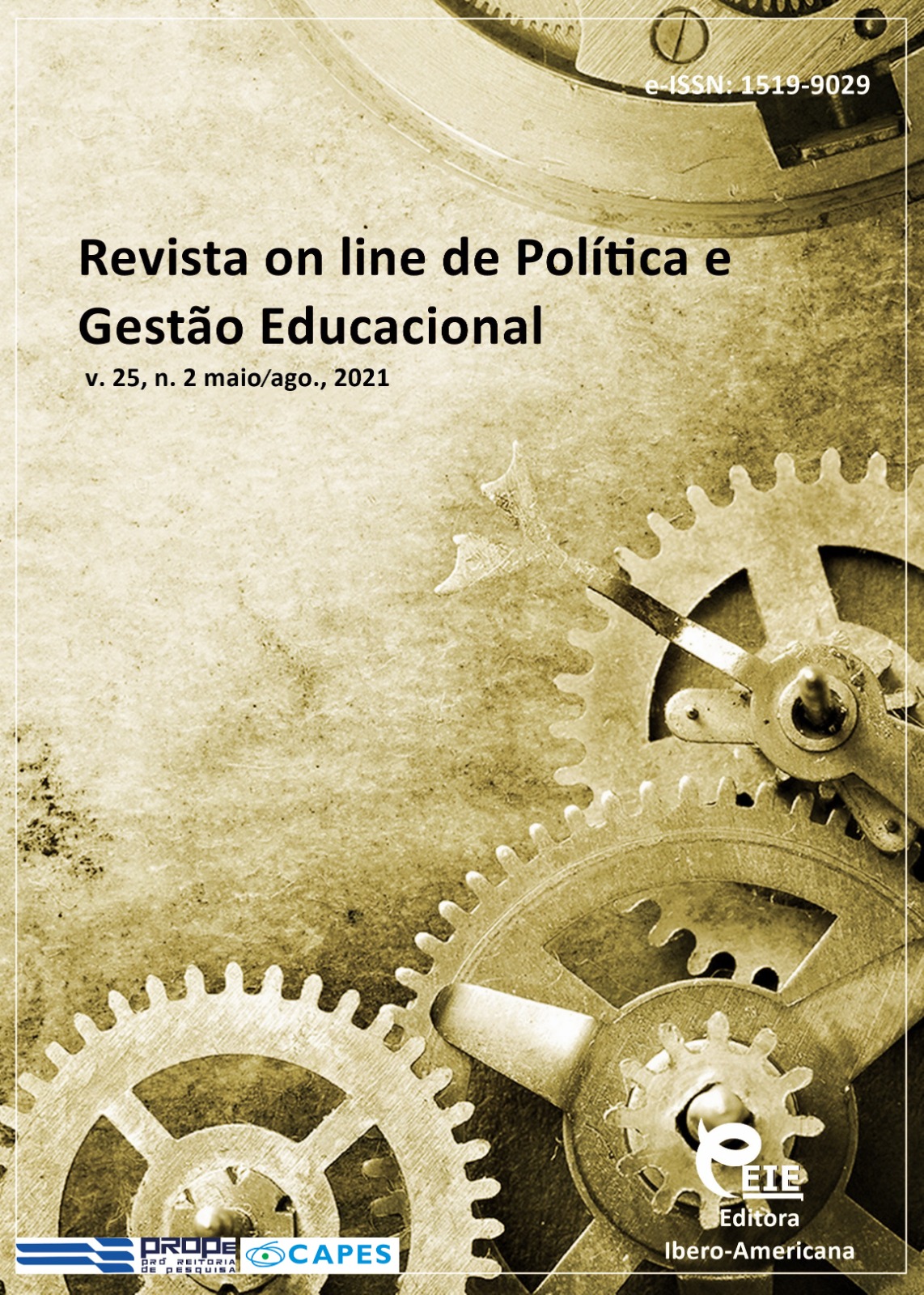Níveis de ansiedade na saúde e status de comprometimento organizacional dos jogadores de handebol com seus times durante a pandemia de COVID-19
DOI:
https://doi.org/10.22633/rpge.v25i2.15503Palavras-chave:
COVID-19, Ansiedade saudável, CompromissoResumo
O objetivo deste estudo foi investigar os níveis de ansiedade na saúde e o status de comprometimento organizacional dos jogadores de handebol com seus times durante a pandemia de COVID-19 . 84 jogadores de handebol de elite (masculino=40, feminino=44) participaram desta pesquisa. Um formulário de informações foi utilizado para determinar as ocasiões e comportamentos dos jogadores de handebol durante a pandemia de COVID-19 . Escala de Ansiedade na Saúde e Escala de Compromisso Organizacional foram realizadas. Os dados obtidos foram analisados através do pacote SPSS. Nos resultados da pesquisa, não houve diferença significativa nos resultados de ansiedade na saúde dos jogadores de handebol em relação ao gênero, tipo de esporte, treinamento e salário. Enquanto os jogadores masculinos foram determinados a ter pontuações mais altas de comprometimento organizacional normativo e de continuação do que as femininas, os jogadores nacionais foram determinados a ter pontuações significativamente mais baixas de continuação, normativas e de comprometimento organizacional total. No entanto, foi determinado que havia uma correlação significativa entre a COVID-19, a pontuação total de ansiedade e a pontuação subdimensional de comprometimento organizacional dos jogadores de handebol.
Downloads
Referências
AYDEMİR Ö. et al. Saglık anksiyetesi ölçe-i’nin Türkçe için güvenilirlik ve geçerlilik çalişmasi. Noropsikiyatri Ars, v. 50, n. 4, p. 325–331, 2013.
BAREEQA, S. B. et al. Prevalence of depression, anxiety and stress in china during COVID-19 pandemic: A systematic review with meta-analysis. The International Journal of Psychiatry in Medicine, v. 56, n. 4, p. 210-227, 2021.
BAXTER, A. J. et al. A. Global prevalence of anxiety disorders: a systematic review and meta-regression. Psychological medicine, v. 43, n. 5, p. 897-910, 2013.
COHEN, A. Commitment before and after: An evaluation and reconceptualization of organizational commitment. Human resource management review, v. 17, n. 3, p. 336-354, 2007.
DURNA, U.; EREN, V. Üç bağlılık unsuru ekseninde örgütsel bağlılık. Doğuş Üniversitesi Dergisi, v. 6, n. 2, p. 210-219, 2011.
ERDUGAN, F. Fiziksel Aktivite ve Egzersizin Mental Hastalıklar Üzerindeki Etkileri. İstanbul: Efe Akademi Yayınları, 2020.
GONG Y. et al. Human resources management and firm performance: The differential role of managerial affective and continuance commitment. Journal of Applied Psychology, v. 94, p. 263-275, 2009.
HALEEM, A.; JAVAİD, M.; VAİSHYA, R. Effects of COVID-19 pandemic in daily life. Current medicine research and practice, v. 10, n. 2, p. 78-89, 2020.
HAMİDİ, S.; BESHARAT, M. A. Perfectionism and competitive anxiety in athletes. Procedia - Social and Behavioral Sciences, v. 5, p. 813-817, 2010.
HAN, B.; DAĞLI, A.; ELÇİÇEK, Z. Örgütsel bağlılık ölçeği’nin Türkçeye uyarlanması: Geçerlik ve güvenirlik çalışması [Adaptation of the “Organizational Commitment Scale” into Turkish: Validity and reliability study]. Electronic Journal of Social Sciences, v. 17, n. 68, p. 1788-1800, 2018.
KARAMUSTAFALIOĞLU, O.; YUMRUKÇAL, H. Deprssion and anxiety disorders. The Medical Bulletin of Şişli Etfal Hospital, v. 45, n. 2, p. 65-74, 2011.
MCLEAN, C. P.; ANDERSON, R. A. Brave men and timid women? A review of the gender differences in fear and anxiety. Clinical Psychology Review, v. 29, n. 6, p. 496-505, 2009.
MEYER, J. P.; ALLEN, N. J.; SMITH, C. A. Commitment to organizations and occupations: Extension and test of a three-component conceptualization. Journal of Applied Psychology, v. 78, p. 538-551, 1993.
ÖZEN, G. et al. Assessment of the impact of COVID-19 pandemic on emotional and nutritional status of university athletes. Physical Education of Students, v. 25, n. 1, p. 43-50, 2021.
ÖZEN, G.; KOÇ, H.; AKSOY, C. Health anxiety status of elite athletes in COVID-19 social isolation period. Bratislavske Lekarske Listy, v. 121, n. 12, p. 888-893, 2020.
SALKOVSKIS, P. M. et al. The Health Anxiety Inventory: development and validation of scales for the measurement of health anxiety and hypochondriasis. Psychol Med, v. 32, n. 5, p. 843-53, 2012.
SHERATON, M. et al. Psychological effects of the COVID 19 pandemic on healthcare workers globally: A systematic review. Psychiatry research, v. 292, 113360, 2020.
WHO. World Health Organization. Coronavirus disease 2019 (COVID-19) Situation Reports. 10.08.2021. 2020. Available: https://www.who.int/emergencies/diseases/novel-coronavirus-2019/situation -reports. Access: 10 July 2021.
ZARAKET, M.; GARİOS, R.; MALEK, L. A. The impact of employee empowerment on the organizational commitment. International Journal of Human Resource Studies, v. 8, p. 284-299, 2018.
Downloads
Publicado
Como Citar
Edição
Seção
Licença
Copyright (c) 2021 Revista on line de Política e Gestão Educacional

Este trabalho está licenciado sob uma licença Creative Commons Attribution-NonCommercial-ShareAlike 4.0 International License.
Manuscritos aceitos e publicados são de propriedade da Revista on line de Política e Gestão Educacional. É vedada a submissão integral ou parcial do manuscrito a qualquer outro periódico. A responsabilidade do conteúdo dos artigos é exclusiva dos autores. É vedada a tradução para outro idioma sem a autorização escrita do Editor ouvida a Comissão Editorial Científica.











